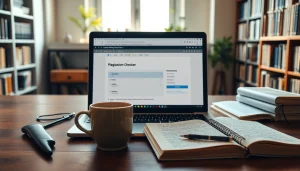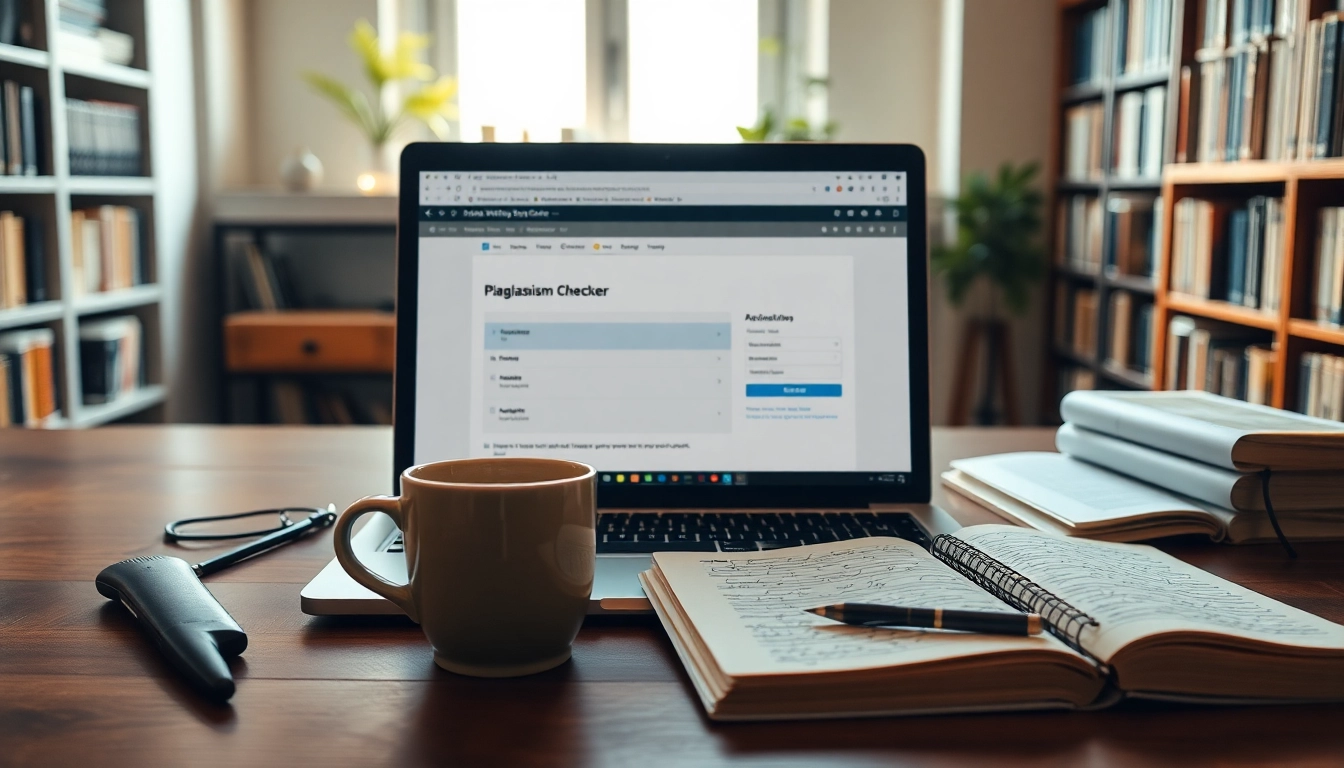Understanding Plagiarism and Its Implications
What is Plagiarism?
Plagiarism is the act of using someone else’s work, ideas, or intellectual property without proper acknowledgment, presenting it as your own. This unethical practice undermines the principles of academic integrity and creativity. Plagiarism can manifest in various forms, including copying text verbatim, paraphrasing someone else’s ideas without credit, and even self-plagiarism, where an author reuses their own previously published work without acknowledgment. Understanding what constitutes plagiarism is essential not only for students but also for writers, researchers, and professionals across all fields.
The Consequences of Plagiarism
The consequences of plagiarism can be severe, ranging from academic penalties to legal repercussions. In educational settings, students caught plagiarizing may face failing grades, academic probation, or even expulsion. For professionals, the stakes are similarly high; plagiarism can damage reputations, result in job loss, or lead to legal action from copyright holders.
In addition to formal consequences, plagiarism can erode trust. Once an individual’s integrity is questioned, it can take a long time to rebuild one’s credibility. The rise of AI and technology has heightened awareness surrounding this issue, as content can be generated or copied more easily than ever. Consequently, the need for robust tools like a plagiarism checker is more important than before to ensure the originality of work.
Types of Plagiarism To Avoid
Understanding the various types of plagiarism is crucial for anyone engaged in academic or creative writing. Here are some common types to be aware of:
- Direct Plagiarism: Copying text word-for-word from a source without proper citation.
- Self-Plagiarism: Reusing one’s own previously published work without acknowledgment.
- Paraphrasing Plagiarism: Rewriting someone else’s ideas without giving credit, even if you change the wording.
- Accidental Plagiarism: Neglecting to cite sources or misquoting can lead to unintentional plagiarism.
- Ghostwriting: Having someone else write your work and presenting it as your own also falls under plagiarism.
Choosing the Right Plagiarism Checker for Your Needs
Key Features to Consider
Finding the right plagiarism checker is essential for ensuring the originality of your work, whether you’re a student, educator, or content creator. Here are key features to consider:
- Accuracy: A high-quality plagiarism checker should provide reliable results that identify both direct and subtle instances of plagiarism.
- Database Size: Some plagiarism checkers compare text against vast databases of published works, academic journals, and internet sources. Larger databases increase detection effectiveness.
- User Interface: The tool should be user-friendly and intuitive, allowing for quick uploading of documents.
- Report Features: Comprehensive reports that detail sources of detected plagiarism and provide percentage scores help users understand levels of originality.
- Integration: Ability to integrate with word processing software or educational platforms can enhance usability.
Free vs. Paid Plagiarism Checkers
When searching for a plagiarism checker, you will encounter both free and paid options. Free tools might suffice for basic needs but often come with limitations, such as smaller databases and less comprehensive reports. Paid services typically provide more features, including more extensive database access, detailed reports, and better customer support. Ultimately, the choice depends on your specific needs and whether you prefer quality and depth over cost.
How to Evaluate the Effectiveness of a Plagiarism Checker
To assess the effectiveness of a plagiarism checker, consider the following criteria:
- Test Results: Try using the tool on multiple text samples, including both original works and known plagiarized texts. Check for the accuracy of detection.
- User Reviews: Look for feedback and reviews from other users to gauge their experiences.
- Trial Period: Many paid services offer free trials; utilize these to determine if it meets your expectations before committing.
- Customer Support: Consider the availability and responsiveness of their customer service for any inquiries.
How to Use a Plagiarism Checker Effectively
Step-by-Step Guide to Running a Plagiarism Check
To maximize the efficiency of a plagiarism checker, follow this step-by-step guide:
- Select Your Text: Choose the document or text you wish to check for originality.
- Input Your Text: Depending on the tool, you may either copy and paste the text or upload a document file directly.
- Run the Check: Initiate the scan and wait for the tool to analyze your work against its database.
- Review Reports: Examine the results carefully, looking for flagged sections and suggested sources.
- Take Action: Make necessary changes based on the feedback, whether it’s rephrasing, proper citation, or removing problematic sections.
Integrating Plagiarism Checkers Into Your Writing Process
Incorporating plagiarism checkers into your writing routine can foster academic integrity and bolster your credibility as a writer. Here are a few tips:
- Run a plagiarism check on drafts as you write instead of waiting until the final version.
- Use plagiarism checkers at different stages—before submission can catch errors, and after publication can ensure no content has been misused.
- Link checks to your research process by ensuring that all references are correctly cited while you’re still writing.
Best Practices After Running a Plagiarism Checker
Once you have your plagiarism report, follow these best practices:
- Adjust Your Text: Edit sections flagged in the report to improve originality.
- Ensure Proper Citations: Check whether you’ve cited all sources appropriately, especially those highlighted in the report.
- Repeat Checks: After making edits, run a new check to confirm that your changes improved originality.
Common Misconceptions About Plagiarism Checkers
Do Plagiarism Checkers Always Detect Originality Issues?
No, plagiarism checkers are not infallible. They can miss nuances in writing, particularly if sources are paraphrased correctly or if the database lacks a specific text. Hence, users should not rely solely on these tools but use them as one of many resources in the editing process.
The Limitations of Plagiarism Checkers
Despite their usefulness, plagiarism checkers have limitations. They may struggle with multilingual texts, variation in phrasing, and non-standard spelling. Additionally, they cannot assess the quality of arguments or the appropriateness of citations — factors that ultimately contribute to the originality of a piece.
Understanding Similarity Reports
After running a plagiarism check, you will receive a similarity report. Familiarize yourself with the key elements of these reports:
- Similarity Index: This percentage shows how much of your text matches existing sources.
- Source List: A list of sources that share segments with your text.
- Highlighted Text: Portions of your work that have been flagged as similar to other texts.
Understanding these elements will help you make informed decisions regarding any necessary edits.
Maintaining Academic Integrity in Your Work
Strategies to Avoid Plagiarism
Establishing a clear strategy to avoid plagiarism can mitigate risks and ensure the integrity of your work. Here are some effective methods:
- Always document your sources during research to facilitate proper citations later.
- Learn the different citation styles (APA, MLA, Chicago, etc.) and use them consistently.
- Engage in paraphrasing and summarizing rather than copying, gaining a better understanding of the material while avoiding plagiarism.
- Use the plagiarism checker regularly to identify and eliminate potential issues early.
The Role of Proper Citation
Citation is critical in academic and professional writing. Proper acknowledgment of sources not only upholds academic integrity but also reinforces the credibility of your arguments. Ensure that all quotes, paraphrases, and ideas borrowed from other authors are accurately cited based on the required style guide.
Utilizing Resources Beyond Plagiarism Checkers
While plagiarism checkers are invaluable tools, they should complement other resources such as writing centers, peer reviews, and academic advising services. Engaging with these resources can deepen your understanding of writing standards and enhance your ability to produce original content.






















+ There are no comments
Add yours